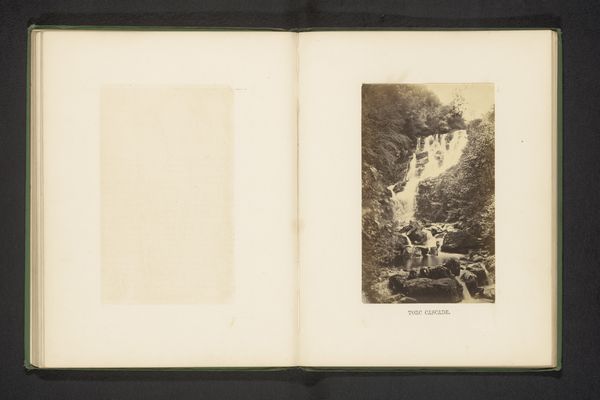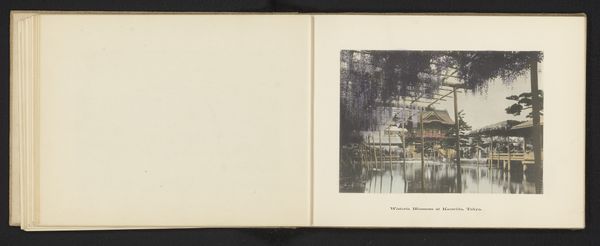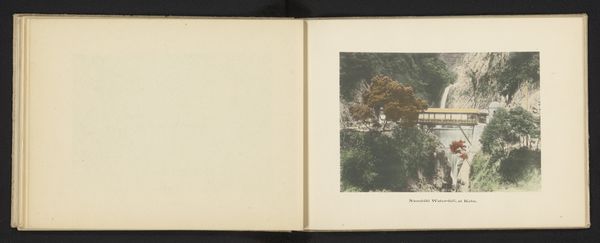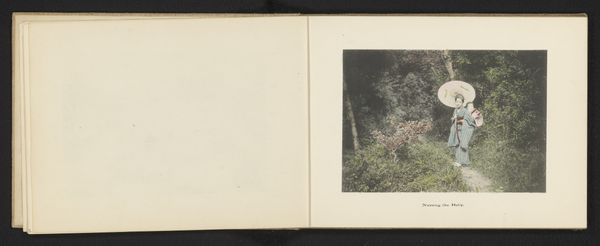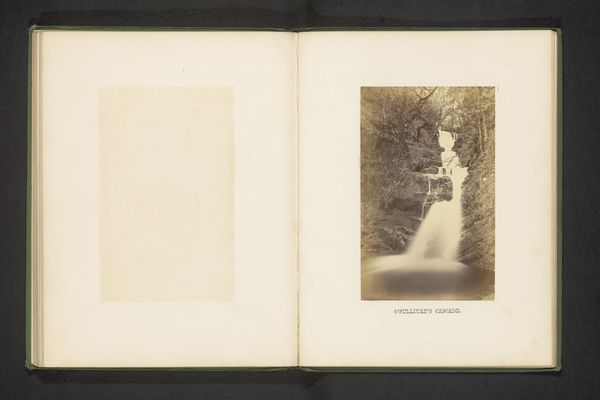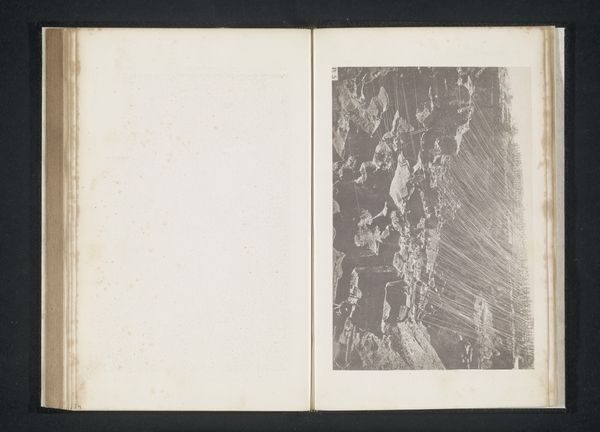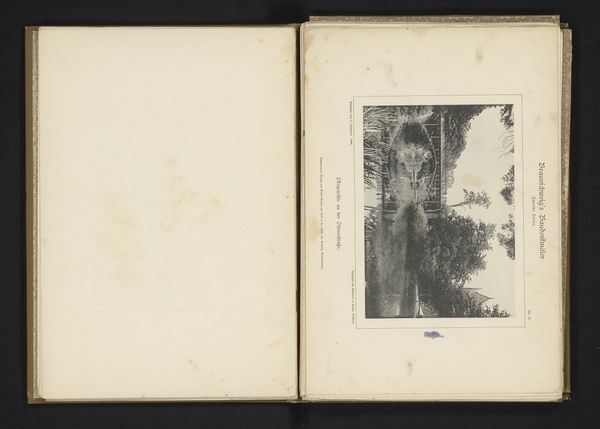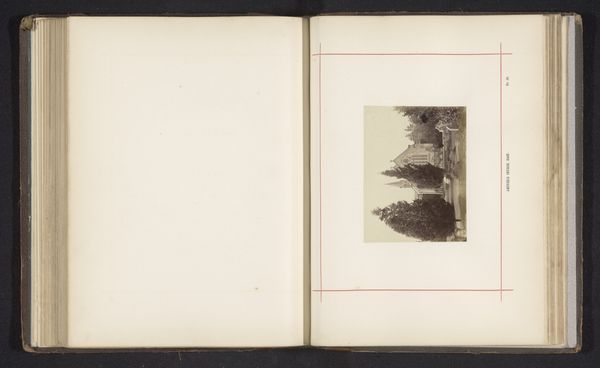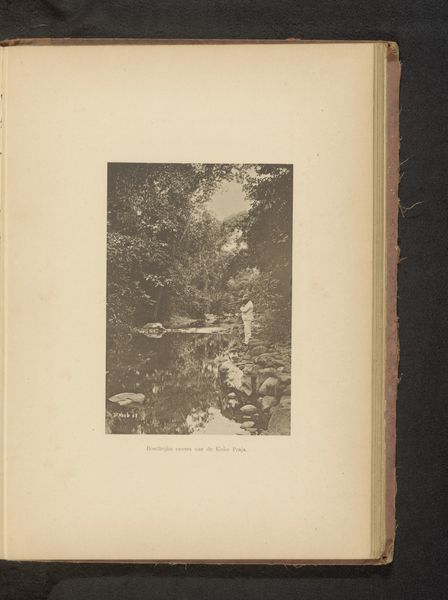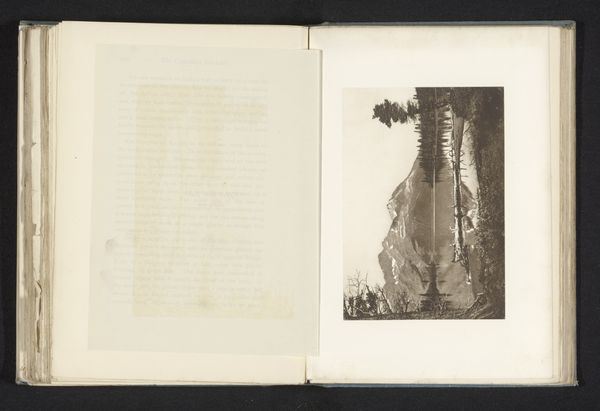
Dimensions: height 105 mm, width 151 mm
Copyright: Rijks Museum: Open Domain
Kōzaburō Tamamura made this photograph of Tamadare Waterfall near Hakone in the late 19th or early 20th century. It’s a hand-colored albumen print, a process popular at the time for adding a painterly quality to photography. This image is particularly interesting when we consider the vogue for Japonisme in the West. In the late 19th century, there was an enthusiasm for Japanese aesthetics, particularly in art and design. Photography studios like Tamamura's catered to Western tourists and collectors, offering idealized views of Japan. Here, the waterfall, a traditional symbol of purity and renewal, is presented as an exotic and picturesque scene, framed for the Western gaze. To better understand the dynamics of cultural exchange at play in this image, we might consider the way guidebooks, travelogues, and museum collections shaped Western perceptions of Japan. The image functions both as a commercial product and a cultural document, reflecting the complex interplay of tourism, orientalism, and artistic expression during Japan's opening to the West.
Comments
No comments
Be the first to comment and join the conversation on the ultimate creative platform.


